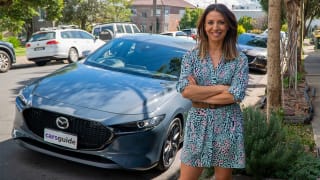
Mazda 3 G20 Evolve hatch 2019 review
Somehow the Mazda 3 is a car that caters to families. New ones anyway.
Browse over 9,000 car reviews
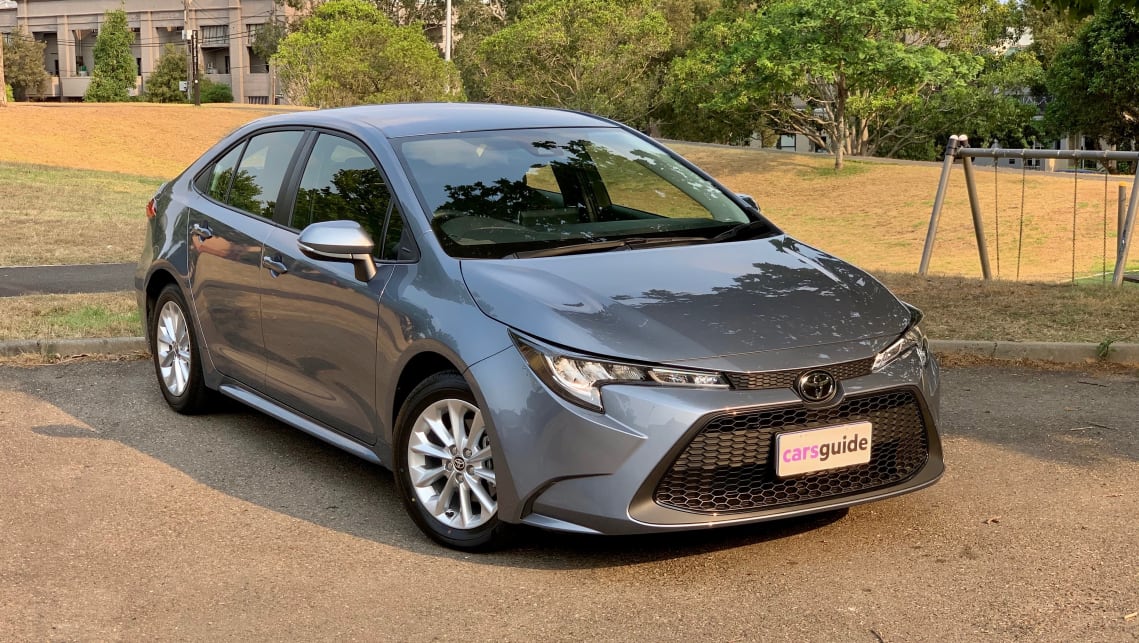
We’ve spent a lot of time in the new-generation Toyota Corolla hatchback, but now the sedan model has arrived to complete the line-up in Australia - and it does so in convincing style.
Not just because it looks great, but because this is arguably the thinking person’s Corolla. It’s got a bigger boot, more back seat space, and still has the option of hybrid and non-hybrid models.
At the launch of the 12th-generation Corolla sedan, Richard Berry nominated the Ascent Sport hybrid model as the “definite pick of the range”. It’s easy to see why, with miserly fuel use and strong equipment levels offered.
But what if you don’t want a hybrid? Plenty of people like the conventional drivetrain over the petrol-electric setup, including fleet customers and private buyers.
This SX model is priced a little higher than Richard’s pick of the range, and comes with a few more bits and pieces to justify the cost. Let’s take a closer look.
| Toyota Corolla 2020: SX | |
|---|---|
| Safety rating | |
| Engine Type | 2.0L |
| Fuel Type | Regular Unleaded Petrol |
| Fuel Efficiency | 6L/100km |
| Seating | 5 seats |
| Price from | $25,740 |
Is this the best looking small sedan out there? I don’t think so. But it is better looking, more cohesive and more modern than the sedan it replaces.
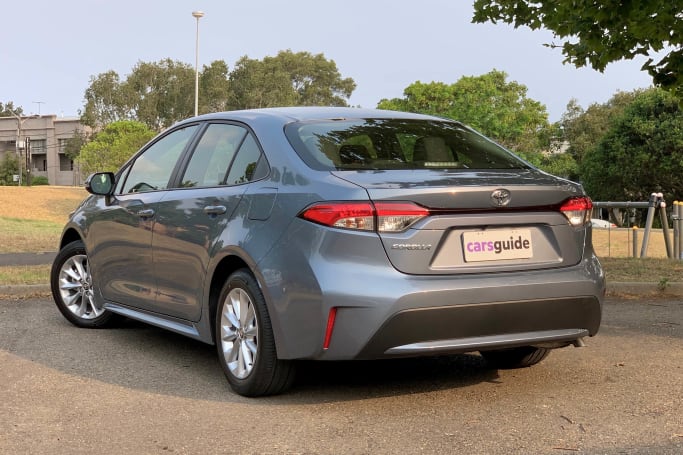
A lot of that comes down to the dimensions. This new-generation Corolla sedan measures 4630mm long (on a 2700mm wheelbase), 1780mm wide and 1435mm tall. It’s a big jump from the hatch - 255mm longer and with a 60mm wheelbase stretch, but its 10mm narrower despite being the same height.

That size means that it isn’t quite as city-friendly when it comes to parking, but the way it has been pieced together means it looks a lot sleeker than its predecessor. Not as boxy, with a longer rear overhang and a shorter front overhang making it look almost like it’s moving while it’s standing still.
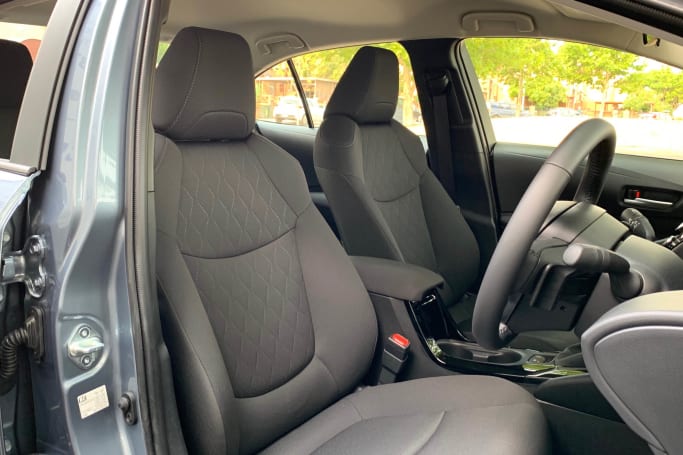
The interior is vastly different to the model it replaces, too. The design is a copy and paste job from the hatchback when it comes to the front seat, but in the rear things are considerably more spacious. That’ll happen with a much longer wheelbase and more length in general. We’ll get into the space in more detail in the next section.

I said at the start of this review that the sedan is the thinking person’s Corolla. I stand by that. It’s huge inside!
Starting at the back, the boot space is claimed to be a cavernous 470 litres, which is as much as some mid-sized SUVs and sedans, not to mention 40 per cent larger than the best-case boot space in the hatch (333L in the model without a spare wheel).

All models in the Corolla sedan range have a spare wheel - it’s a space-saver under the boot floor of the SX petrol variant. And all sedan models have a 60:40 split-fold rear seat, but you can’t lever the seatbacks down from the boot like in some other small sedans - you’ve got to release them at the top of the rear seat. There’s a bit of a step to contend with if you’re loading long items in, too.
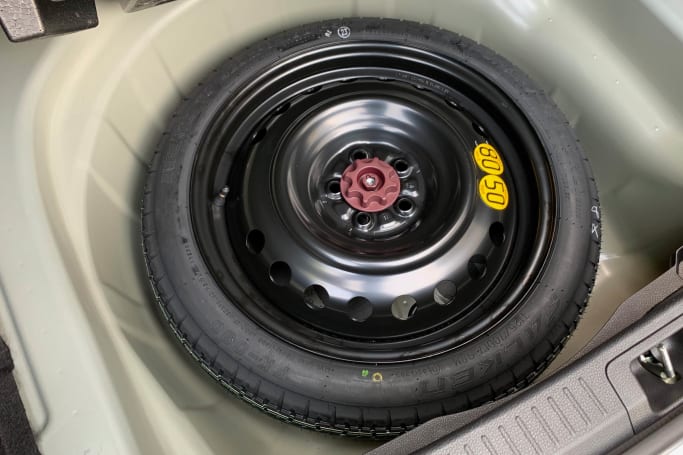
Then there’s the back-seat space. It’s phenomenal. There’s easily enough space for me to sit behind my own driving position (I’m 182cm tall) with ample leg room, head room and toe room. And the back seat is comfortable, too, with enough space for three adults across if you need it, or you can fold down the centre armrest with cup holders if there’s just two of you. Alternatively, if you have kids, there are three top-tether points and dual outboard ISOFIX baby seat attachment points.
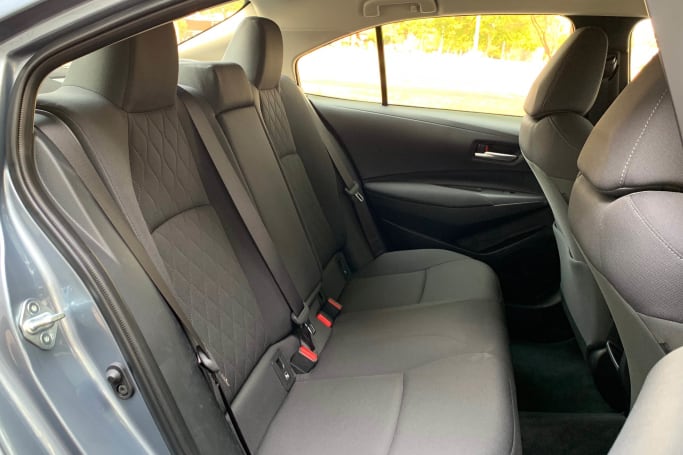
There are bottle holders in all four doors and one map pocket in the back, while up front three are two cup holders between the seats, a covered centre console, and a wireless phone charger in front of the gear selector near the USB port. That USB port is a bit hidden, and it could prove annoying if you don’t have a cable permanently in the car. Invest in one.
That USB port connects to the 8.0-inch media screen, which now supports Apple CarPlay and Android Auto, meaning you can mirror your phone’s main functions on the display. It’s great that Toyota is finally using this tech, and while the native media system menus are pretty easy to use, this just makes living with the car even easier.
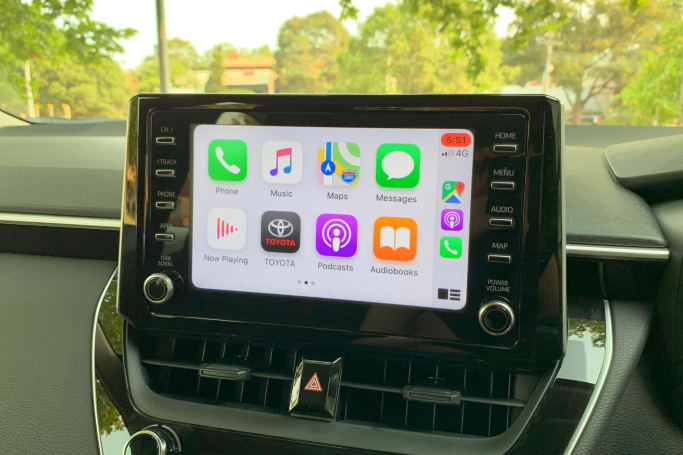
I can’t help but question that you don’t get leather or even fake leather trim on the seats in the SX spec, given it’s price, but the cloth trim is nice, and the materials used throughout the cabin are all very high quality. Even the buttons and switches are nice to use.
The SX petrol model has a price of $28,235 plus on-road costs, which is a good $3400 more expensive than the Ascent Sport that sits below it.
For that extra expense you get a bit more equipment, like standard sat nav with live traffic updates ($1000 option on the base car, bundled with digital radio which is also standard in this model), a leatherette-lined steering wheel with paddle shifters, 16-inch alloy wheels, climate control air-con (single zone), smart key entry and push-button start, and a wireless phone charger. You also get blind-spot monitoring in this SX grade, along with a bunch of other high-tech anti-crash gear - we’ll run through the full safety specs in the safety section below.
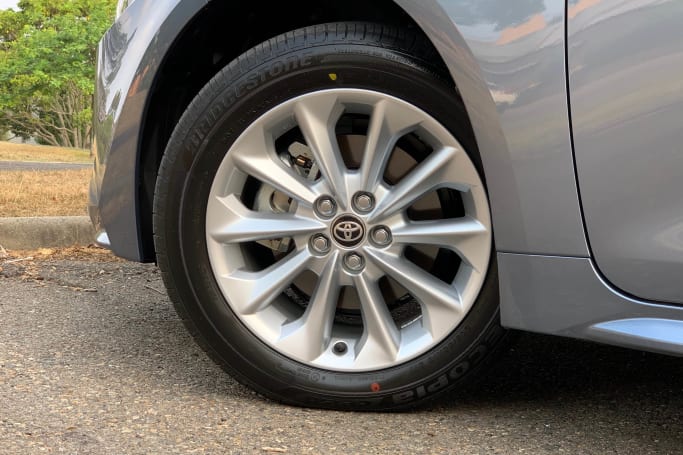
If you’re wondering what you get standard in the model below that carries over to this grade, there’s a six-speaker stereo, 8.0-inch screen with Apple CarPlay and Android Auto, 4.2-inch digital instrument display next to the dials, electronic park brake (which goes on automatically when you engage Park, which we love!), auto LED headlights, LED daytime running lights and LED tail-lights, heated exterior mirrors and more.
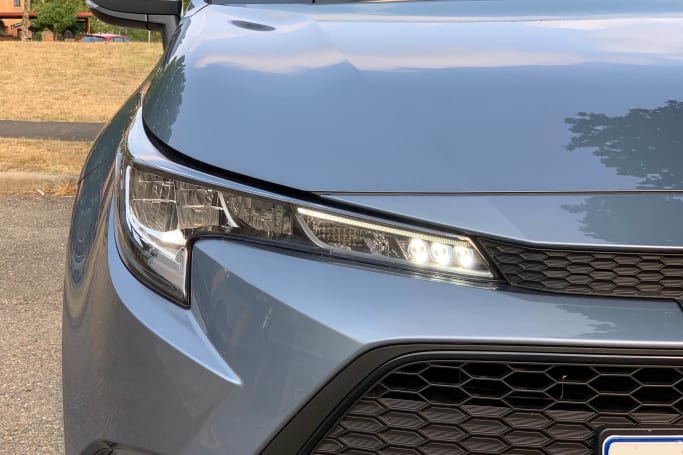
Is it worth stepping up to the SX over the Ascent Sport? You can make your own mind up on that. Or you might want to consider the ZR, which looks considerably more sporty with its 18-inch wheels and sunroof, plus it gets nice stuff like leather-ish trim and heated front seats among other extras. It costs quite a bit more, though ($33,635).
The SX petrol model has a 2.0-litre four-cylinder engine producing 125kW of power (at 6600rpm) and 200Nm of torque (at 4400-4800rpm).
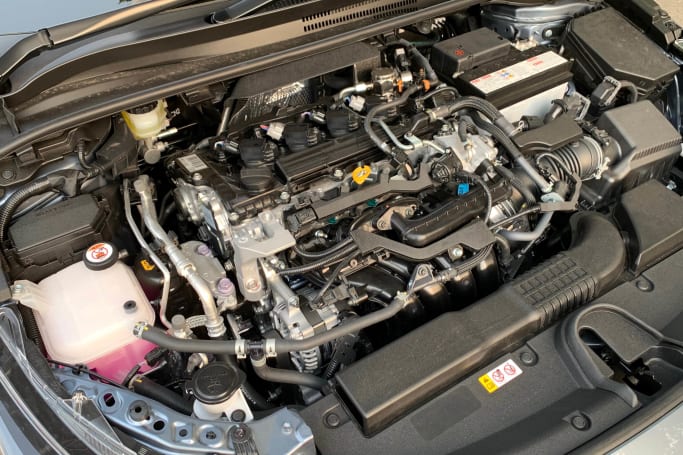
There is no manual version of the SX, with the petrol model offered exclusively with a continuously variable transmission (CVT) automatic. It’s not your average CVT, though - it has a launch gear, which is a conventional first gear in the transmission before it switches over to CVT mode (there are 10 stepped ratios to use, Toyota claims).
The real star of the Corolla show is the hybrid, but that’s not what we’re testing here. It only costs $1500 more, if you’re interested.
The SX petrol-auto model has a claimed official combined cycle fuel consumption figure of 6.0 litres per 100 kilometres. That’s pretty impressive, if you can match it.
On test we saw a little higher, with our urban-biased drive returning 7.8L/100km. That’s still good for a car with this much practicality on its side.
If you really care about fuel use, though, go the hybrid. The claim for it is 3.5L/100km. Realistically, you’ll still see less than 5.0L/100km in everyday driving.
Fuel tank capacity for the petrol variants is 50 litres (hybrid: 43L).
The Toyota Corolla sedan isn’t as dynamic looking as the hatch, but it still manages to drive with a bit of flair.
The steering remains a highlight, with a nice lightness and accuracy at low speed and a reassuring weight and traceability at higher pace. It’s really predictable and makes you feel confident when you’re driving.
Is it fun? Look, I think you’re more likely to get a smile on your dial through a section of twisty corners in the hatchback, but that largely comes down to the size of the car and the footprint it has on the ground, because the hatch is very light on its feet and nimble as a result. The sedan is more comfort-focused, and feels like a car aimed at more, shall we say, mature buyers.
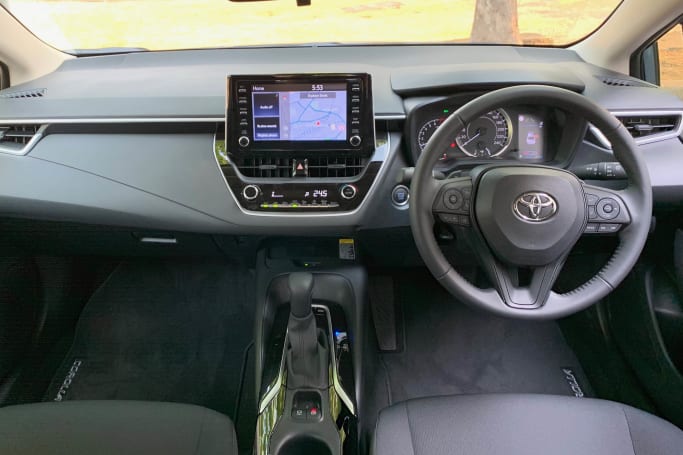
The suspension is good, too. It doesn’t feel quite as resolved as the hatchback, particularly the front-end which can be more easily upset by sharp edges. But never does it feel uncomfortable or unsophisticated - it’s comfortable, composed, and rides over small lumps and bumps with confidence.
The engine is good, with a level of refinement some of its rivals could only wish for. It revs smoothly, is never too vocal, and teams brilliantly with the CVT auto.
The transmission’s launch gear works well in most situations, though we did note an occasional clunkiness at city speeds when it transferred back and forth. As pace builds, the transmission is smooth and smart, reacting quickly when you put your foot down and never droning like some other CVTs out there.
Basic Warranty
5 years / unlimited km warranty
ANCAP Safety Rating

The Toyota Corolla sedan range was awarded a five-star ANCAP crash test rating in November 2019, but confusingly that score was actually based on the 2018 scores for the hatchback.
Even so, the Corolla SX comes generously equipped with safety equipment.
This model has high- and low-speed auto emergency braking (AEB) with pedestrian (day and night) and cyclist (day only) detection, adaptive cruise control, lane departure warning and lane keeping assistance, road sign recognition, blind-spot monitoring, auto high-beam lights, a reversing camera and seven airbags (dual front, front side, driver’s knee and full-length curtain).
Missing items include a surround view camera, front and/or rear parking sensors, rear AEB and rear cross-traffic alert. It’s amazing how quickly the game changes when it comes to safety tech.
The Toyota Corolla carries the same (now pretty much industry-standard) five year/unlimited kilometre warranty, but the Toyota version of this cover includes powertrain cover out to seven years provided you have logbook maintenance - and it doesn’t even have to be through a Toyota dealership.
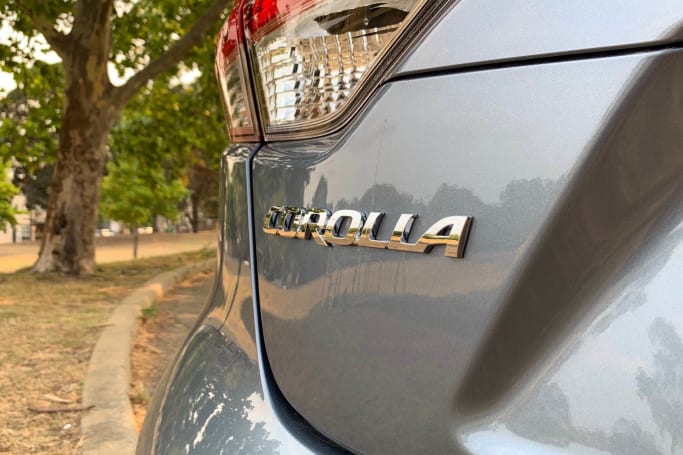
The service requirements are every 12 months/15,000km, with capped-price servicing spanning out to five years/75,000km. The cost per service is very attractive, at $175 a visit. Once you hit the 90,000km mark, though, the price will go up. Even so, it’s very cheap to own.
Toyota doesn’t include roadside assist at no cost - some other brands offer that for seven years or more for free.
The 2020 Toyota Corolla SX petrol sedan certainly offers a lot of food for thought if you’re after a Corolla that isn’t hybrid, and isn’t a base model.
We wouldn’t be surprised if most people tried to convince themselves to step up to the ZR model if they were looking for that particular car, but as it stands, the SX is a competent compact sedan with strong equipment levels that is pleasant to drive and cheap to own.
| Vehicle | Specs | Price* | |
|---|---|---|---|
| Ascent Sport | 2.0L, ULP, CVT AUTO | $23,870 – 29,480 | 2020 Toyota Corolla 2020 Ascent Sport Pricing and Specs |
| Ascent Sport + TR KIT | 2.0L, ULP, CVT AUTO | $23,870 – 29,480 | 2020 Toyota Corolla 2020 Ascent Sport + TR KIT Pricing and Specs |
| Ascent Sport | 2.0L, ULP, CVT AUTO | $22,770 – 28,050 | 2020 Toyota Corolla 2020 Ascent Sport Pricing and Specs |
| Ascent Sport + Navi (hybrid) | 1.8L, Hyb/ULP, CVT AUTO | $26,510 – 32,670 | 2020 Toyota Corolla 2020 Ascent Sport + Navi (hybrid) Pricing and Specs |
| Design | 7 |
|---|---|
| Practicality | 9 |
| Price and features | 8 |
| Under the bonnet | 7 |
| Efficiency | 8 |
| Driving | 8 |
| Safety | 8 |
| Ownership | 8 |
$19,990
Lowest price, based on 677 car listings in the last 6 months